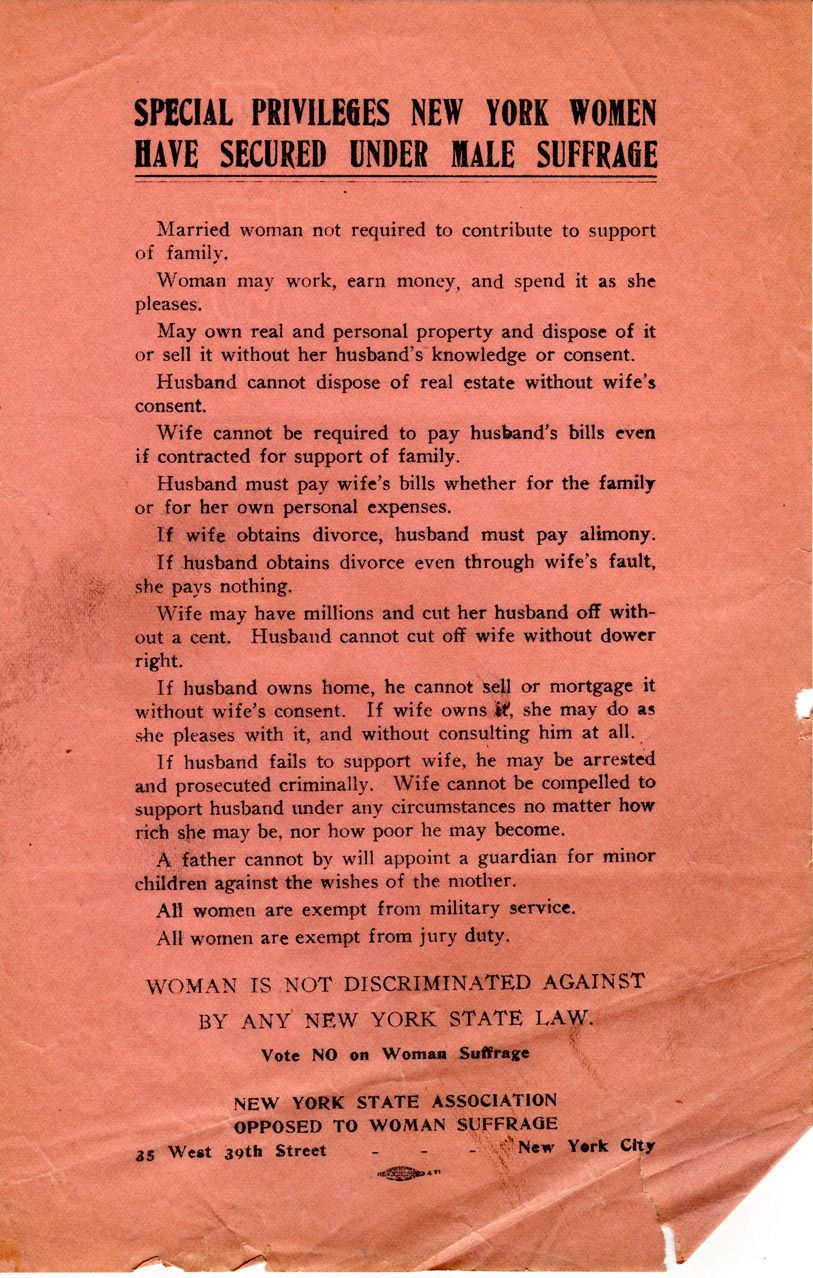On August 18, 1920 the Nineteenth Amendment to the United States Constitution is ratified, guaranteeing women’s suffrage.
suffrage
[ suhf-rij ] noun
the right to vote, especially in a political election.
The following article was originally published in the winter 2017 issue of The Historian

by Jessica Giannetti
“The vast majority of women are engaged at their natural business, i.e the raising and improving of families. It is a big job, requiring all their powers. Shall we crowd more on overladen shoulders?” (The Evening Sun, 1 November 1915)

These unbelievable thoughts were a common occurrence in the beginning of the 1900s. Women had yet to secure the right to vote, despite numerous attempts and countless years of effort. “Trust her not; she is fooling thee”, “They do not want it”, “Not their issue” these are just some of the headlines from The Evening Sun in November 1915. Women were thought of as too untrustworthy and uneducated to make such important decisions. In the world we live in today it doesn’t always dawn on us that many of the rights and freedoms we embrace were once sought after and yearned for.
2017 marks the 100 year anniversary of women procuring the right to vote in New York. A battle which began way back in the 1800s with events such as the Seneca Falls Convention and activists like Elizabeth Cady Stanton and Lucretia Mott. Sadly, both women died before the right they fought so hard for was granted, but their efforts were not disregarded. The beginning of the twentieth century brought about a stronger push for woman’s suffrage. Several demonstrations, parades and leagues were formed; not all of them women. In 1912, The National Men’s League for Woman Suffrage was formed. In 1913, the New York chapter for men was established and Three Village’s own Ward Melville joined the fight.
“Supporters of woman’s suffrage do not claim for it that it is a universal panacea for all the evils of our government, or that women when they obtain the vote will be less susceptible to temptation than men. We feel that the vote is a right, that no man has a right to set himself upon a pinnacle and cry to women: “So! I am the all-wise, the all-seeing, the all-beneficent creature. To me should be ascribed the willingness and the ability to see and to accomplish all that is best for you.” Who is man that he should do this? Who has said to him that he is by nature the superior and the governor of his mate?” (Ward Melville, The Brooklyn Daily Eagle, 3 July 1913)

The Melville family (Frank, wife Jennie and son Ward) played a large role in the fight for women’s rights. They joined organizations, held and attended weekly meetings and even participated in the 1913 Woman Suffrage parade in New York City.

“Frankie and Jane Melville being, young, handsome, & frisky stood in line hours & hours & hours & marched Jane from Washington Sq. to 59” St. Frankie from eleventh St. and Wardie being younger, handsomer (tho that is purely a matter of taste) and friskier mounted a white steed and played Marshall.” (Jennie Melville, Personal Notes, 1913)
The Melville Family’s involvement did not stop there. They held formal dinners with notable speakers, organized demonstrations, and participated in several rallies including the rally in October 1915, at Carnegie Hall. As secretary of the Men’s League for Woman Suffrage, Ward Melville was instrumental in planning a horseback or motor car hike to Washington to present the New York State petition for woman suffrage to Congress.

In 1915, the Woman Suffrage amendment finally came to a vote in New York State. Even with the large outpouring of support for women’s rights the amendment did not pass. However, Brookhaven was the only town in Suffolk to have a majority of “Yes” votes. Perhaps we have the Melville Family and their involvement to thank for that. It was not until November 1917, seventy nine years after the Seneca Falls Convention that women were granted the same right men had held for centuries. It took generations of people almost a century to have equality among the genders. Today, because of the valiant efforts of these activists voting is a privilege and a right for everyone.
New York State Association Opposed to Woman Suffrage flyer

North American Woman Suffrage Association flyer

“Votes for Women” sash, photographs and graphics from the Melville Family Papers - Three Village Historical Society.
Visit the website Long Island and the Woman Suffrage Movement at https://longislandwomansuffrage.com/ to learn more









Comentários